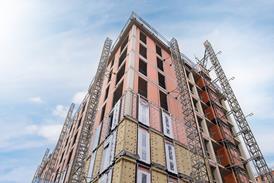The government’s sustainable buildings code has been delayed for at least three months
The code, which would provide guidelines to promote more sustainable building practices, such as reducing energy consumption, will not be published until March next year.
It was initially due for publication at the end of 2005, but scheduling problems at the ODPM have forced a delay. The steering group behind the code – which includes David Pretty, Barratt Homes chief executive, and Peter Fanning, Office of Government Commerce deputy chief executive, met for the first time on 20 December, several months behind schedule.
The code was supposed to be unveiled in draft form to the industry at the Sustainable Communities Summit last week, but instead only a two-and-a-half page outline was published.
The government had pushed for several specific proposals to be presented to the summit last week, but steering group members are understood to have vetoed this as they had met for a total of just three hours. A source said: “There was not a lot of time, what with Christmas and the closeness of the summit, so we decided not to jump the gun. You do not want to put out some proposals and not be able to retrieve them.”
You do not want to put out proposals you can’t retrieve
ODPM source
The outline said that the code would cover the following key areas: energy performance; water performance; waste management during construction and occupation; use of materials; durability and flexibility, such as in the event of climate change; health and well-being, including enhanced ventilation; and flood resistance measures.
The report said: “The code will set out clearly specified minimum performance for energy, water and resource efficiency. It will also establish a series of performance levels.”
Michael Ankers, Construction Products Association chief executive, who sits on the nine-strong steering group, said: “We are encouraged about the framework of the code, as it relates to performance-based outcomes, rather than being prescriptive, such as saying a certain material should be used. This is more likely to stimulate innovation.”
























No comments yet